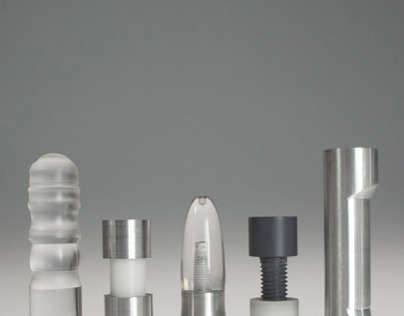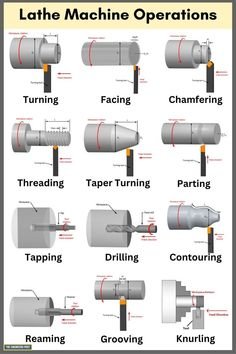Table of Contents
Metal turning projects for beginners should focus on simple designs. Start with basic items like bushings, simple rings, or small tools.
Metal turning offers an excellent introduction to the world of machining. Beginners should choose projects that build foundational skills while providing tangible results. Simple items like bushings and rings require basic operations, making them ideal for novices. These projects teach essential techniques such as facing, turning, and parting-off.
Start with softer metals like aluminum or brass for easier handling. Invest in quality tools and safety gear to ensure a smooth learning curve. With practice, beginners can gradually take on more complex projects, honing their skills and confidence. Metal turning can be a rewarding hobby or a stepping stone to a professional machining career.
Introduction To Metal Turning
A metal lathe is a powerful machine. It shapes metal by rotating it against a cutting tool. Beginners must understand the basic parts. These include the headstock, tailstock, and tool rest. The headstock holds the workpiece. The tailstock supports it. The tool rest holds the cutting tool. Always start at a slow speed. This gives better control. Practice on scrap metal first. This helps you get a feel for the machine.
Safety is very important. Always wear safety goggles to protect your eyes. Keep your hands away from the rotating parts. Loose clothing can get caught in the machine. Tie back long hair. Never leave the machine running unattended. Always turn it off before making adjustments. Use ear protection if the machine is loud. Follow these steps to stay safe.

Credit: www.amazon.com
Essential Tools And Materials
For metal turning projects, beginners need essential tools such as a lathe, cutting tools, and measuring instruments. Quality materials like aluminum, brass, and mild steel ensure smoother learning and better results.
Selecting The Right Lathe
A good lathe is very important. Beginners should choose a mini-lathe. It is easy to handle. Mini-lathes are also affordable. Look for a lathe with variable speed control. This helps in making precise cuts. Ensure the lathe has a sturdy base. Stability is key to good metal turning. A good chuck is also needed. A 3-jaw chuck is a good start. It grips metal pieces firmly.
Must-have Metal Turning Accessories
Metal turning requires several accessories. Cutting tools are essential. High-speed steel (HSS) tools are great for beginners. Center drills help in making accurate holes. Calipers measure dimensions precisely. Lubricants reduce friction and heat. Safety gear like goggles and gloves is crucial. These items make metal turning safe and precise.
Simple Metal Spinning Top
Start by choosing a simple design. A spinning top is a great project for beginners. Draw a sketch of the top. Make sure your measurements are clear. This will help during the turning process. Choose a metal piece that is easy to work with. Aluminum is a good choice.
First, secure the metal piece in the lathe. Turn on the lathe at a slow speed. Use a cutting tool to shape the metal. Make sure to wear safety glasses. Shape the metal into a cone for the top. Make the bottom flat so it spins well. Smooth the surface with sandpaper. Finally, test your spinning top to see if it works.

Credit: www.behance.net
Creating A Custom Bottle Opener
You will need a piece of metal, a lathe, and safety gear. Make sure you have a measuring tape and a marker. A file and sandpaper will help smooth edges. Don’t forget a drill for making holes. A vice will hold your piece steady.
Start by securing the metal in the lathe. Use a sharp tool to carve the shape. Take small cuts to avoid mistakes. Check your measurements often. Smooth the edges with a file. Sandpaper will make it even smoother. Drill a hole for the opener tip. Ensure the hole is the right size. Use the vice to hold the piece while drilling.
Crafting A Miniature Candle Holder
Start by selecting a metal that is easy to work with. Aluminum is a good choice for beginners. It is soft and lightweight, making it easier to shape. Brass is another option; it has a nice shine and is also easy to turn on a lathe.
Smooth the surface of your candle holder with fine-grit sandpaper. This will remove any rough spots. Apply a metal polish to give it a nice shine. For a final touch, consider adding a coating to protect the metal from rust and wear.
Turning A Decorative Door Knob
Start by choosing a simple design for your door knob. Use a sketch to plan the shape and details. Symmetrical designs are easier for beginners. Use sharp tools to create clean lines. Add grooves or ridges for extra texture. Experiment with different patterns to find what you like best. A well-planned design makes the project more enjoyable.
First, use sandpaper to smooth the surface of the door knob. Start with coarse grit and move to finer grit. Next, apply polishing compound with a soft cloth. Rub in small circles to bring out the shine. Use a buffing wheel for a mirror-like finish. Clean off any residue with a clean cloth. Your door knob should now look polished and professional.
Making A Set Of Customized Chess Pieces
Crafting customized chess pieces offers an engaging introduction to metal turning. Beginners can hone their skills while creating unique, intricate designs. This project combines creativity and precision, making it ideal for novice metalworkers.
Planning And Designing The Pieces
Start by choosing a theme for your chess pieces. Draw simple sketches of each piece. Decide on the height and shape of each piece. Use different designs for pawns, knights, and other pieces. Keep the design simple for easy turning. Choose a metal that is easy to work with. Aluminum is a good choice for beginners. Make sure all pieces are balanced. They should stand upright on the chessboard.
Advanced Turning Techniques For Detailing
Use a fine-point tool for detailed work. Make small cuts to add texture to the pieces. Add grooves to the bases for a better grip. Practice making smooth curves and angles. Pay attention to symmetry in your designs. Use polishing tools to give a shiny finish. Experiment with different techniques to create unique designs. Take your time to perfect each piece. Enjoy the process of creating something unique.
Diy Metal Pen: A Practical Project
Select a metal blank with the right dimensions. Cut it to the desired length using a saw. Ensure the cut is clean and smooth. Use a file to remove any sharp edges. Secure the blank in a lathe for shaping. Start turning at a low speed. Gradually increase the speed for a smooth finish. Check the diameter frequently to avoid mistakes.
Gather all pen components before starting. Insert the pen refill into the metal barrel. Attach the end cap to the barrel. Ensure it fits tightly. Place the pen clip on the barrel. Secure it with a small screw. Insert the front nib into the barrel. Twist to ensure a snug fit. Your pen is now ready for use.
Troubleshooting Common Issues
New metal turners often make mistakes. Incorrect tool angles can ruin a piece. Always check the tool’s angle before starting. Use sharp tools to avoid chattering. Tool positioning is crucial for a good finish. Ensure the tool is at center height. Too much speed can cause problems. Start with lower speeds and increase gradually. Over-tightening the chuck can damage the workpiece. Tighten just enough to hold the piece securely.
Achieving precision in metal turning can be tough. Tool wear affects accuracy. Replace or sharpen tools regularly. Machine calibration is essential. Regularly check and adjust your machine. Temperature changes can affect measurements. Work in a stable environment. Use micrometers for precise measurements. Double-check your work frequently.
Credit: www.totallyscrewedmachineshop.com
Further Learning And Community Resources
Reading books can help you learn metal turning. Many books have pictures and step-by-step guides. Some good books are “Metal Turning Basics” and “Introduction to Metalworking”. Online courses are also very helpful. Websites like Udemy and Coursera offer courses. These courses have videos and quizzes to test your knowledge.
Online forums and groups are great for learning. People share tips and tricks. You can ask questions and get answers fast. Facebook has many metalworking groups. Reddit has a metalworking community too. Joining these groups helps you learn from others.
Frequently Asked Questions
What Can I Make With A Metal Lathe For Beginners?
Beginners can make simple projects like chess pieces, pens, rings, handles, and small bowls using a metal lathe.
What Is The Easiest Metal To Lathe?
Aluminum is the easiest metal to lathe. It is soft, lightweight, and cuts smoothly. Ideal for beginners.
What Are The Disadvantages Of A Metal Lathe?
Metal lathes can be expensive and require regular maintenance. They produce noise and can be hazardous without proper training.
What Can You Do On A Metal Lathe?
A metal lathe can turn, face, drill, bore, thread, and knurl metal. It shapes metal into precise designs.
Conclusion
Starting metal turning projects can be both rewarding and educational. Practice and patience will improve your skills. Choose simple projects to build confidence. With each project, you’ll master new techniques. Metal turning offers endless possibilities for creativity. Happy turning and enjoy your journey into metalworking!
